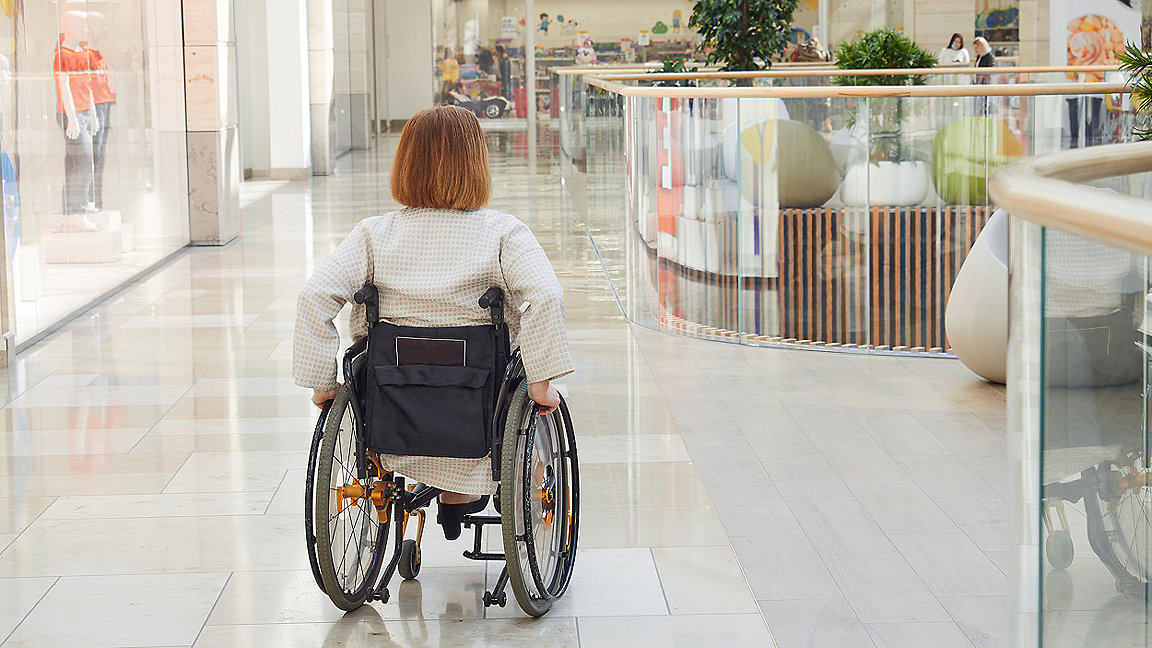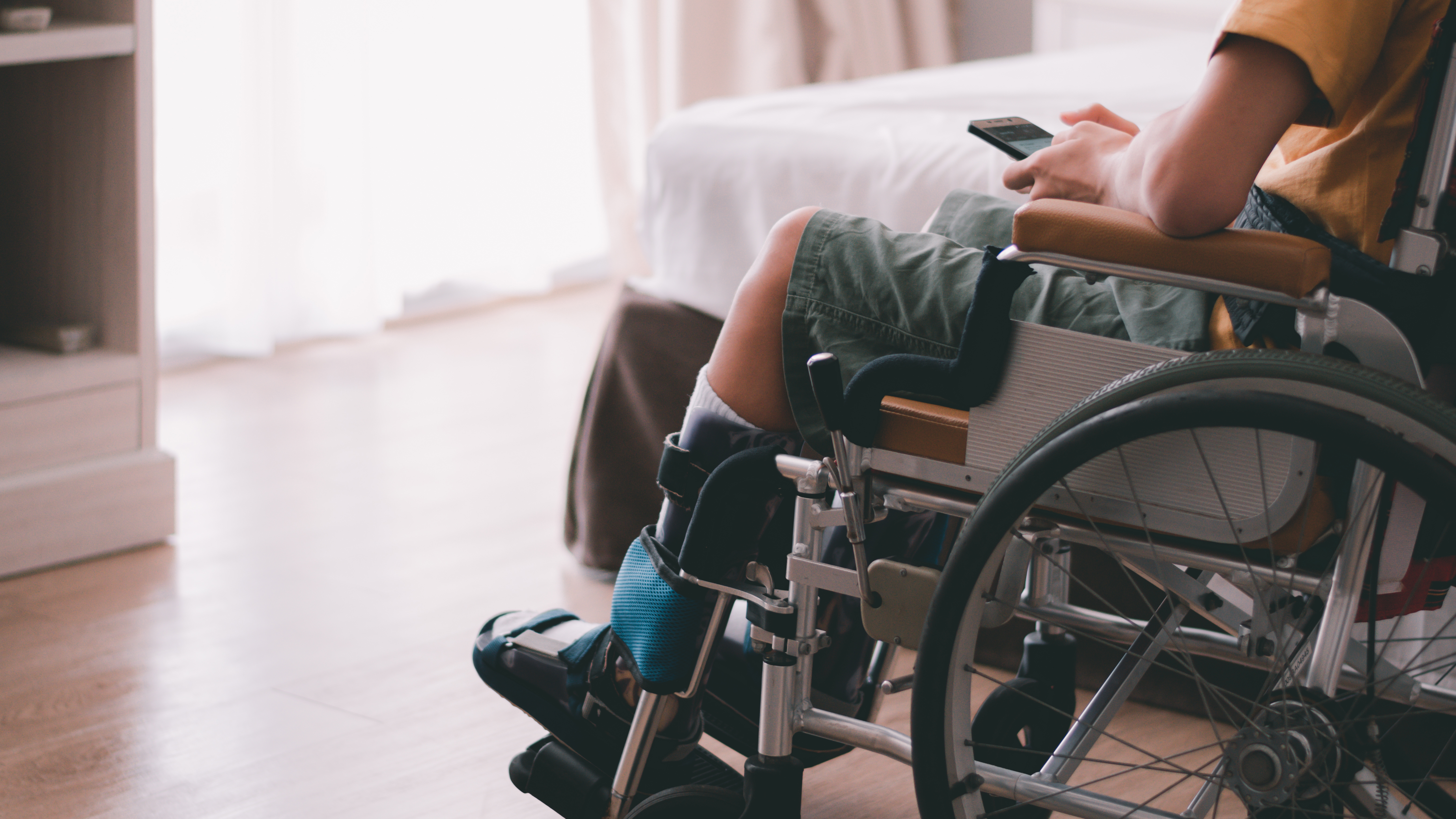
Active travel – walking or wheeling where possible – has many benefits for our health and for the environment. But have you ever considered what the experience of getting around our towns and cities is like for disabled people?
Local authorities and property owners are now, rightly, considering this issue when planning improvements to town centres, shopping areas and retail parks, or when creating new ones.
While there is a duty to do so under the Equality Act 2010, it also makes sound economic sense to include the UK's population of more than 16m disabled people and around 4.9m carers in the potential customer base.
Consultants can offer insight on issues
New developments and refurbishments alike will benefit from having an access consultant on the project team to give expert advice. The National Register of Access Consultants maintains a directory of accredited access professionals.
An access consultant could assess the layout of the site, the routes around it, the selection of materials and the placement of features such as seats and planters. Inclusive design can be cost-neutral when considered at an early stage.
The alternative could be a poor experience for disabled people, leading to negative publicity, damaging legal challenges or expensive remedial works such as relocating fixtures or crossing points.
When it comes to redevelopment, the access consultant will survey an existing area with all disabilities in mind.
This not only includes identifying issues that affect wheelchair users and people with mobility difficulties, but also those with vision or hearing impairments, conditions that cause chronic fatigue, and people who are neurodiverse or have a neurodegenerative condition such as dementia.
The physical barriers for pavement users are perhaps the most obvious. Footpaths interrupted by driveways, or that are narrowed or uneven due to the presence of trees or pavement parking, can make routes impassable to wheelchair and mobility scooter users.
Well-designed crossings that are raised up level with the pavement or have dropped kerbs are also essential. Next time you take a stroll through your neighbourhood, challenge yourself to cross the road only at accessible crossing points and you will see how difficult this can be.
People who already face challenges getting around are often forced to make substantial detours and denied the free movement that many of us take for granted. This could mean a disabled shopper giving up on getting to all the retailers they would have liked to visit.
Controlled crossings, with audible and visual signals and tactile paving, can give confidence about pedestrian priority, though.
Independent disability consultant Callum Russell for instance says: 'As a blind person, I find that identifying crossings is made much easier with tactile paving. However, the location of the control boxes should be considered.
'When a blind person uses a controlled crossing, they must first locate the control box and be able to line themselves up with it to be sure of crossing a road safely; and, in many cases, to know when it is safe to cross by feeling a rotating cone located on the underside of the box.'
Street improvements may be counterproductive
Many refurbishment or regeneration schemes make additions to the streetscape – trees, planters, seats, bollards, signage, lighting and even public art works. While potentially beneficial these can, if badly designed or placed, add further hazards to getting around.
Can that pavement dining area be easily detected and bypassed? Are steps and ramps each designed in line with guidance?
Misguided attempts to combine the two can create steps with variations in height that are a significant trip hazard, and changes of level without handrails – the worst of all worlds.
Arty new benches may look great in selfies, but are there sufficient seats with supportive back rests and armrests for those who need to sit?
Disability equality consultant and trainer Tanvi Vyas comments: 'With building works and changes, buses and taxis could find it tricky to stop. Being able to easily change from one mode of transport to another is really important to me as a powerchair user. So making sure that bus stops are easy for drivers to get to, that street furniture won't obstruct the deployment of ramps and that taxi drivers can stop to get people in and out is crucial.
'Disabled people often use taxis to join up journeys, or in bad weather. Every London black cab is accessible to the majority of wheelchair users, so ensuring that taxis feel confident to stop – without the threat of a ticket – is really important. Other customers jump in on the road, but disabled people often can't.'
Crown Estate partnerships seek lived experience
The Crown Estate is collaborating with accessibility experts AccessAble to make public spaces in London more accessible. The estate's managing director for the capital Simon Harding-Roots says: 'If we are to truly make our towns and cities more accessible, diverse and inclusive, then we must work closely with those who have lived experience of disabilities.
'Our work with AccessAble has helped us better understand our visitors' needs, informing the way we manage our places and the surrounding areas. We want partnerships such as this to go even further, touching every aspect of our portfolio to ensure that it is accessible to all, and adding significantly to the social value that we create for destinations across the UK.'
See here for more information on The Crown Estate's collaboration with AccessAble.
New guidance aims to enable inclusive design
New guidance on creating inclusive environments is being produced all the time. Recent examples include the British Standard PAS 1899: 2022 Electric vehicles – Accessible charging.
This is voluntary guidance to help ensure vehicle charging points can be used by disabled motorists, as few currently have sufficient room to manoeuvre around the parked vehicle, dropped kerbs to access the pavement or suitably designed charging equipment.
British Standard PAS 6463:2022 Design for the mind meanwhile brings together research and guidance on neurodiversity and the built environment. This considers the impact of noise or smells, some patterns of lighting or shadows, or the need of some people for quiet spaces.
Journalist, author and speaker Lydia Wilkins explains: 'I have hypersensitivity issues, meaning I hear more but do not really have a filter for it. This means that public transport, shops and other places are inaccessible venues for me.
'I notice that a lot of shops play music – and with open doors this often mixes all together and can be very distressing. A way to address this may be to have quiet zones more often.'
Accessible areas benefit all
When our environments are designed to be inclusive, it is not just disabled people who benefit. Environments with good signage are also more welcoming to new visitors.
Ensuring there are high-quality public toilets for all users – rather than just relying on pubs and food outlets to meet the need – allows people to visit an area with confidence and stay longer. Step-free routes are helpful to those with children in pushchairs or with luggage or delivery trolleys, for instance.
Disabled and non-disabled children should also be allowed to play together in environments that are fun and welcoming. During a recent primary school workshop run by AccessAble about the local high street, one boy commented that: 'People don't ask me how I feel about places.'
Many disabled people may feel the same – and how they feel is of key importance. Statistics may show no evidence of accidents in shared space; but what about the disabled people who no longer feel safe to go there, or can only do so when someone is free to accompany them?
This is why seeking out and listening to the lived experience of disabled people can make for a more inclusive built environment.
Comprehensive access information rather than a vague statement about being fully accessible or wheelchair-friendly – what does that mean? – can also take the doubt out of going out.
A detailed online access guide to a town centre, shopping centre or individual business, such as those created by AccessAble, will cover the entire visitor experience, from public transport and parking all the way through to the customer service desk. Is there a lower counter? Is there a hearing loop? And yes, it will give details of those all-important toilets.
If you build it right – and tell people about it – they will come.
'Disabled and non-disabled children should be allowed to play together in environments that are fun and welcoming'
Janet Jones is an NRAC registered access consultant at AccessAble
Contact Janet: Email
Carrie-Ann Lightley is head of marketing at AccessAble
Contact Carrie: Email
Related competencies include: Inclusive environments, Planning and development management, Property management
RICS and disability
Now, more than ever, there is a moral and an economic imperative to embrace and embed equity in society and in the workplace. Upon a framework of commitment, value and governance, RICS can and will help to shape an accessible and inclusive profession where everyone can thrive, realise their potential and deliver positive social impact.
Jean Hewitt, accessibility and inclusive environments specialist, and Mike Adams, CEO of Purple, recently joined Sybil Taunton on the RICS Podcast to discuss how to design an accessible and inclusive environment for people with disabilities.
Click the play icon below to listen.

